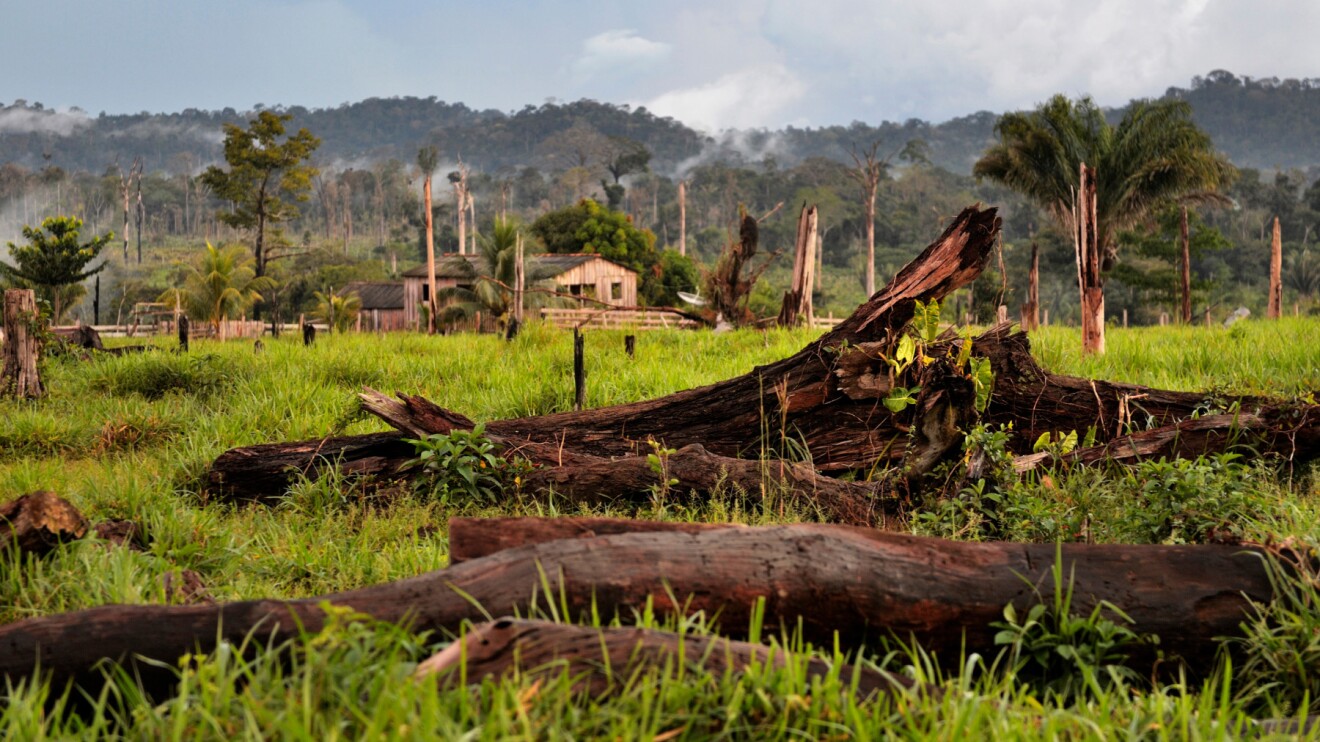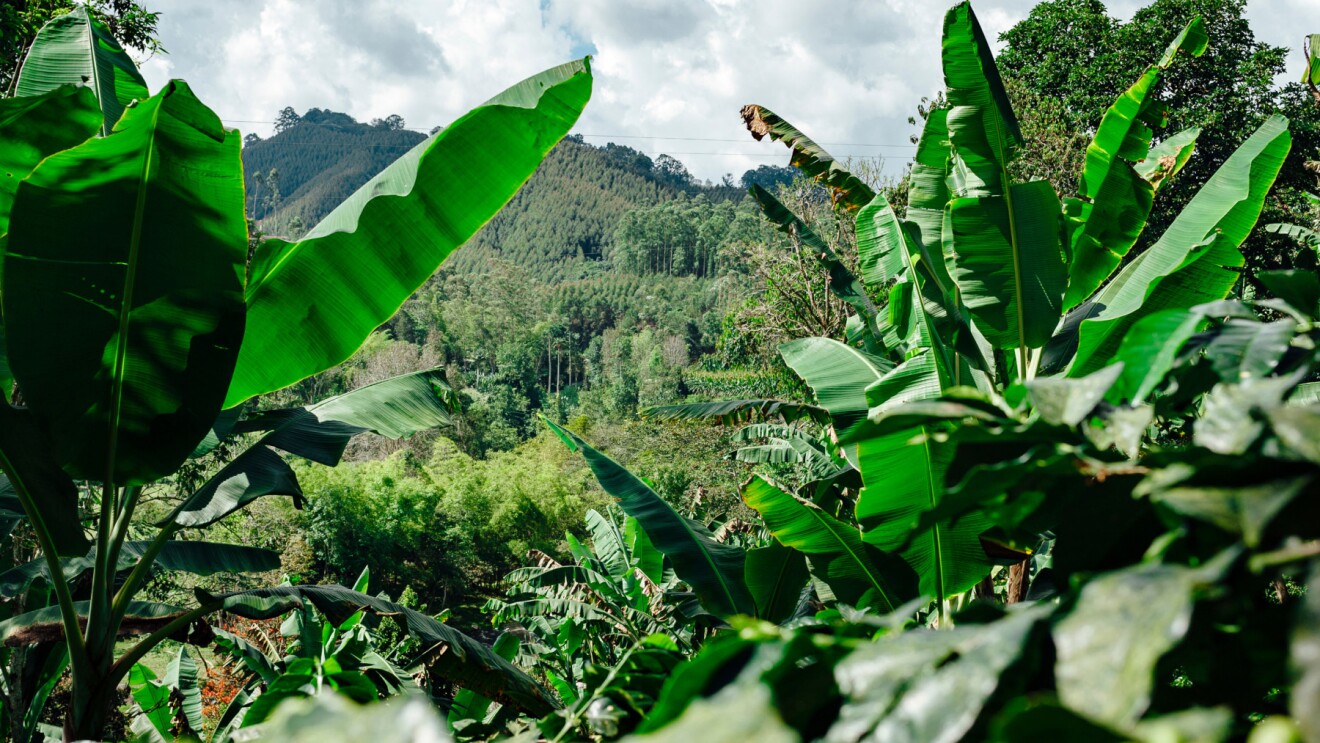
How Amazon Approaches Carbon Credits, a Key Tool in the Fight Against Climate Change
Published by Todd Bush on February 17, 2025
Carbon credits help unlock private sector climate finance at scale, and drive impact beyond our own operations.
Climate scientists agree that in addition to decarbonizing the global economy, slowing down climate change requires halting the loss of forests, and restoring millions of square miles of the trees that pull carbon dioxide from the air, and release CO2 when they’re cut down. Yet, since 2000, the world has lost 3 million square miles of forest, an area half the size of Europe, and we continue to lose another 37,500 square miles each year.
With more than 600 projects worldwide, Amazon is also supporting solar and wind initiatives in regions with polluted grids to help curb emissions.

At Amazon, we focus on three actions that support the protection of forests and carbon removal: reducing tropical forest loss, restoring degraded land, and advancing technologies to remove CO2 from the atmosphere. Each of these can be quantified through carbon credits, a vital tool for tracking contributions to the fight against climate change.Check out the following to learn more about how Amazon approaches carbon credits.
>> In Other News: U.S. Hydrogen Production Group Leads Major Japanese Project
1. How is Amazon working to slow and reverse global forest loss and scale CO2 removal?
We focus on high-impact, innovative initiatives that generate high-quality carbon credits and encourage global sustainability action. We look for opportunities where Amazon can support the long-term development of nature restoration, like working with local governments to open up degraded public land for restoration, mobilizing finance, and experimenting with new business models. For example:
In 2021, Amazon co-founded the LEAF Coalition, a public-private initiative mobilizing more than $1B to help protect the world’s tropical forests and support the local communities and Indigenous populations who reside alongside them.
Through projects like the Agroforestry and Restoration Accelerator, Amazon is helping to build a pipeline of nature-based restoration projects aimed at helping small-scale farmers store more carbon on their land while developing new sources of income to support their families.
And because new technology is also needed to scale carbon removal, Amazon and The Climate Pledge Fund are investing in direct air capture (DAC), an emerging set of new and innovative technologies that chemically filter CO2 from the air.

2. What are carbon credits, and what role do they play in these efforts?
High-quality carbon credits are a key tool in the fight against climate change because they provide a link between financial investment and climate action outside of a company’s business operations. One carbon credit represents one metric ton of CO2 reduced or removed from the atmosphere.Carbon credits help unlock private sector climate finance at scale and allow companies like Amazon to channel funding to critical climate projects that might otherwise remain underfunded. When held to a high-quality standard, carbon credits help to ensure that every dollar spent results in measurable, additional, and lasting climate benefits.You can read more about the role of carbon credits in Amazon's approach to carbon neutralization.
On World Nuclear Energy Day, learn how Amazon is innovating to power our operations and address climate change.
3. How do carbon credits fit into Amazon's overall sustainability strategy?
In 2019, Amazon co-founded and signed The Climate Pledge, an ambitious goal to reach net-zero carbon by 2040. As part of that commitment, our priority is to reduce carbon emissions across our operations by implementing real business changes like transitioning to carbon-free energy, decarbonizing our real estate portfolio, and electrifying our delivery fleet. Our decarbonization strategy is based on the latest climate science, and we do not count carbon credits toward our decarbonization targets.At the same time, we are working to fight climate change beyond our direct operations by taking action to slow and reverse deforestation globally and to scale carbon removal. Amazon’s investments to protect and restore nature using carbon credits are separate from the work to decarbonize our global business.

4. How is Amazon approaching opportunities to improve the voluntary carbon market?
In recent years, the voluntary carbon market has been challenged by a lack of transparency and quality, leading to skepticism about carbon credits as an effective tool to combat climate change. At Amazon, our scientists aim to address these challenges and work with third-party experts to monitor, measure, and ensure the validity and integrity of our projects. Amazon takes a “first principles approach”—we identify rigorous methodologies, rather than default to the current standards, and continually revisit the science as technologies and new advancements are made.
5. What makes a carbon credit “high-quality” or “high-integrity”?
LiDAR renderings of Brazilian agroforestry canopies. LiDAR is a remote-sensing measurement technique that uses laser pulses to map 3D structures of an area. It allows scientists to measure carbon removed from the atmosphere and stored in the canopy.LiDAR renderings of Brazilian agroforestry canopies. LiDAR is a remote-sensing measurement technique that uses laser pulses to map 3D structures of an area. It allows scientists to measure carbon removed from the atmosphere and stored in the canopy.LiDAR renderings of Brazilian agroforestry canopies. LiDAR is a remote-sensing measurement technique that uses laser pulses to map 3D structures of an area. It allows scientists to measure carbon removed from the atmosphere and stored in the canopy.LiDAR renderings of Brazilian agroforestry canopies. LiDAR is a remote-sensing measurement technique that uses laser pulses to map 3D structures of an area. It allows scientists to measure carbon removed from the atmosphere and stored in the canopy.
The process of evaluating carbon credits is complex, and international verification standards continue to evolve based on the latest available science and methodologies. To ensure the carbon credits that Amazon purchases are high-quality, we use a number of science-based criteria to evaluate projects along three key dimensions:
Additionality. We consider a carbon credit to be high-quality or high-integrity when it represents the reduction or removal of one metric ton of CO2 from the atmosphere that would not have occurred without climate finance.
Estimation of results. Some elements of existing carbon credit methodologies may tend to overestimate results, while others may underestimate the real impact. Our approach is to be transparent about this challenge, bias toward under-estimation, and improve the accuracy over time as new science and measurement technologies are developed.
Social benefits. Nature-based projects and initiatives must benefit local communities and ecosystems, and be designed and implemented in partnership with stakeholders in the community. This includes things like legal protections for the forest, recognition of Indigenous rights, and sustainable natural resource planning.
Learn how we're supporting the transition to carbon-free energy and powering our business with sustainability in mind.
6. What role do technology and innovation play?
Solving climate change requires planning for the long-term and inventing new technologies that don’t already exist today. At Amazon, we think big and combine data and science with passion and invention to help solve some of the world’s toughest environmental challenges. We continuously adapt and evolve our approach based on our learnings and latest available science, and through programs like the Climate Pledge Fund, Amazon is investing in new and emerging climate technologies to drive innovation and invention at scale.There are a number of emerging technologies like Direct Air Capture (DAC) that have the potential to effectively remove carbon dioxide from the atmosphere and store it permanently. In 2023, Amazon made its first investments in DAC, including a Climate Pledge Fund investment in CarbonCapture Inc., a company recognized for its pioneering modular DAC systems.
7. Does Amazon use carbon credits against its carbon footprint today?
We use high-quality carbon credits today in a few cases, such as our buildings that have achieved the International Living Future Institute’s third party-verified Zero Carbon Certification. Our approach is to use carbon credits in areas of our footprint where we have already made decarbonization progress in alignment with the latest climate science, not in place of.
Subscribe to the newsletter
Daily decarbonization data and news delivered to your inbox
Follow the money flow of climate, technology, and energy investments to uncover new opportunities and jobs.
Latest issues
-
Can One Truck Fix Hydrogen’s Biggest Problem?
Inside This Issue 🚛 Alberta's Shared Truck Model Could Crack Hydrogen Adoption ✈️ ZeroAvia Completes Financing Round 🌾 Frontier And NULIFE Scale New Biowaste Carbon Removal Approach 🔥 WAGABOX® Of ...
-
North America’s Carbon Removal Year in Review: Winners, Losers, Surprises
Inside This Issue 🌎 North America's Carbon Removal Year in Review: The Deals, Policies, and Milestones That Shaped 2025 🚢 Hapag-Lloyd And North Sea Container Line Win ZEMBA Second E-Fuel Tender 🪨 ...
-
CCS Just Got Cheaper Than Anyone Expected
Inside This Issue 🧪 Shrinking the CCS Energy Penalty: A Molten Borate Breakthrough Promises Viability for Hard-to-Abate Canadian Oil & Gas 👤 Syntholene Energy Corp Appoints Former CEO of Carbo...
Company Announcements
-
WAGABOX® Of Steuben County, The First WAGABOX® Unit In The US
Deployment / Application Site Location: Bath, Steuben County, New York, USA Site/Plant name: Steuben County Landfill Partners/Clients: Steuben County (landfill owner), Corning Natural Gas (...
-
ZeroAvia Completes Financing Round
KEMBLE, UK and EVERETT, Wash., Dec. 22, 2025 /PRNewswire/ -- ZeroAvia today announced that it has completed a further round of financing, led by Barclays Climate Ventures, Breakthrough Energy Ventu...
-
CHARBONE Delivers Its First Load Of Clean UHP Hydrogen In Ontario
BROSSARD, QC, Dec. 22, 2025 /PRNewswire/ -- CHARBONE CORPORATION (TSXV: CH; OTCQB: CHHYF; FSE: K47) ("CHARBONE" or the "Company"), a North American producer and distributor specializing in clean Ul...
-
SÃO PAULO, BRAZIL, DECEMBER 17, 2025 – InPlanet, a pioneer in tropical Enhanced Rock Weathering (ERW), announced today that it has signed an agreement with Microsoft to remove more than 28,500 tonn...